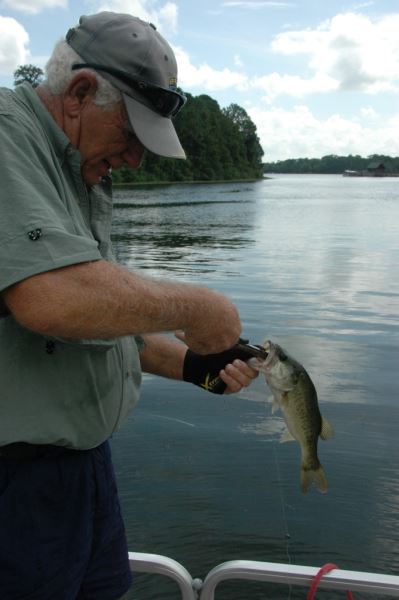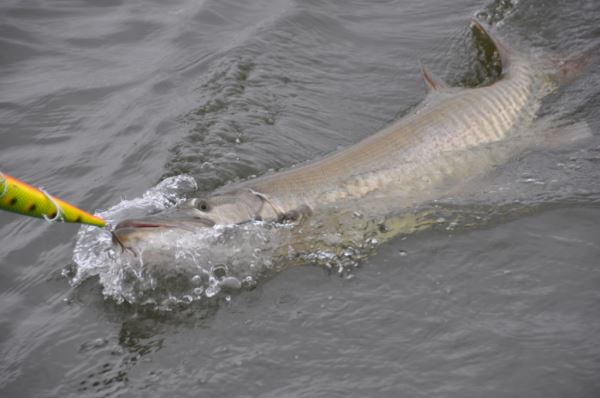
For safety and convenience-sake, shore-bound or aboard a boat, the most important tool any angler needs to have on hand is a decent pair of fishing pliers.
When I worked as a mate aboard commercial lobster and sport fishing boats early in my career in the Florida Keys, I wasn’t allowed aboard the boats without a pair of pliers at my hip. PFD wear was up to us, but access to quality pliers with hook-and-line cutting capabilities were required equipment by most captains. For the crew knew the tool could save them from injury—or death—as well as that of the mate who carried them. Whether cutting wire leaders, downrigger cables or lobster pot lines or freeing hooks from flailing fish, quality pliers had to be at hand and ready for use in a moment’s notice.
I realize that it’s rare for a life-threatening situation to arise when fishing from a deck or pontoon boat, at least one where a pair of pliers is going to save the day, but you never know. And to be honest, you’ll find a pair of China-made, hardware-grade, needle-nosed pliers aboard every boat I own and somewhere in most tackle-boxes. You know, the ones you can get for under 10 bucks at any discount store. But when I’m out on open water, fresh or salt, I have a premium pair of pliers on my belt or, if it’s my boat, at the helm and ready for use.

Needle-nosed pliers are called up for a variety of tasks over the course of a fishing day. At their most basic, the long, narrow jaws allow you to crimp split shot on the line and safely remove hooks from the maws of toothy fish—or hooks lodged deep down the throat of any gamefish. The pliers serve similar duty when removing hooks from items like boat upholstery, Bimini tops, deck shoes, fishing shirts and anglers’ hides. The latter is why it’s paramount to purchase fishing pliers with wire-cutting jaws. If a hook gets buried beyond the barb in someone’s skin, it’s often better to push the point on through and out, cut the point and barb off, and back the balance of the hook out. The alternative is the “snatch” method for removing hooks from anglers’ skin, which we’ve covered here before.
Those cutting jaws not only cut wire, but monofilament line as well; good ones will snip notoriously hard-to-part super-braids. Just make sure the cutting edges are made for use on wire instead of mere fishing line before you clamp down on the shank of an errant Aberdeen or attempt to part a wire leader. Even then, quality fishing piers come with replaceable cutting blades.
Pliers made for fishing may offer other features beyond replaceable cutters, such as “teeth” or a bent nose for opening split rings, hook-straightening holes, crimping sections on the jaws, slip-resistant grips, belt sheath, and coiled or spring-loaded tethers to keep them put.
 On my pontoon boat, I carry a pair of Rapala 8.5-inch stainless steel fishing pliers, which retail for about $15. They are corrosion-resistant (I’ve used them in saltwater as well), have a decent cutting jaw, and I can use them to open split rings when changing hooks on lures. That is in addition to the set of Harbor Freight pliers I keep up on the bow, which I get about two summers’ worth of wear out of if I remember to coat them with WD-40 a few times each season. Shimano’s Brutas stainless steel pliers are another popular choice among serious boater/anglers. Several quality fishing pliers are made of aluminum as well, with quality models offered by P-Line Adaro, Calcutta, Lew’s and Boomerang.
On my pontoon boat, I carry a pair of Rapala 8.5-inch stainless steel fishing pliers, which retail for about $15. They are corrosion-resistant (I’ve used them in saltwater as well), have a decent cutting jaw, and I can use them to open split rings when changing hooks on lures. That is in addition to the set of Harbor Freight pliers I keep up on the bow, which I get about two summers’ worth of wear out of if I remember to coat them with WD-40 a few times each season. Shimano’s Brutas stainless steel pliers are another popular choice among serious boater/anglers. Several quality fishing pliers are made of aluminum as well, with quality models offered by P-Line Adaro, Calcutta, Lew’s and Boomerang.
The bottom line is, even a cheap pair of needle-nosed pliers aboard your boat will come in handy—especially if you do any fishing. And when you need ‘em, you really need ‘em.

